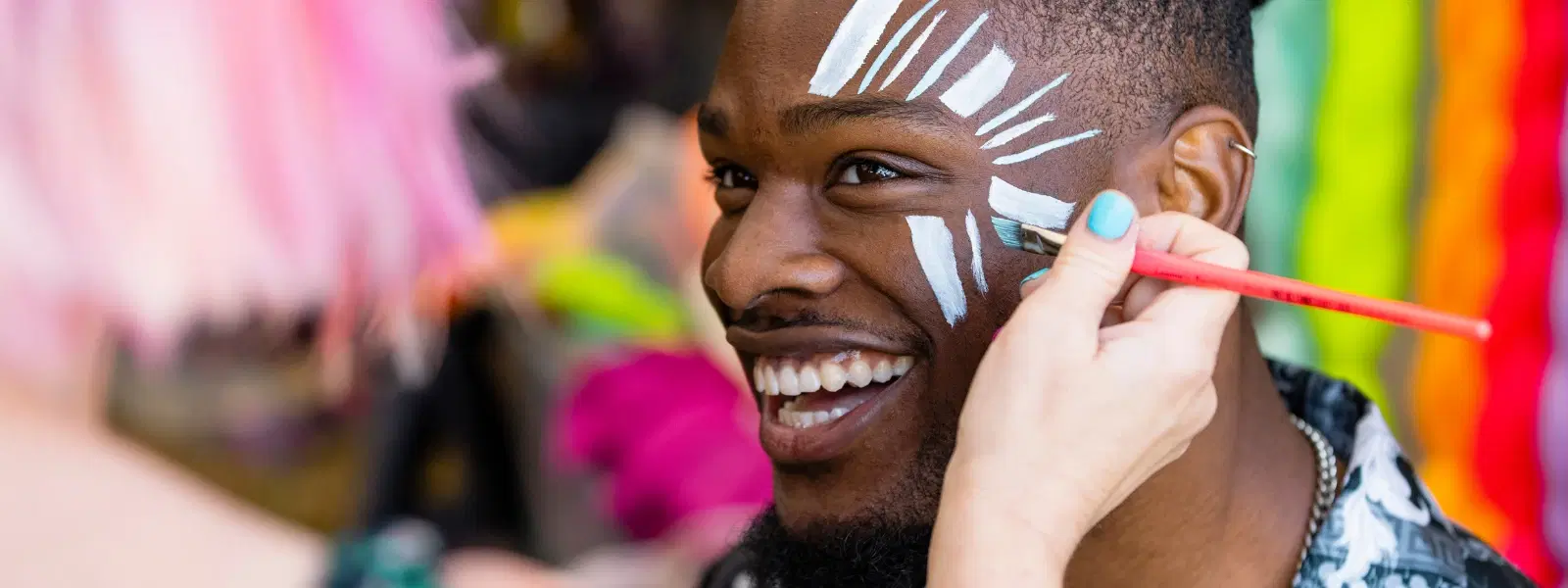
Hotels
•03 min read

Tribal tattoos hold a mystique that transcends mere body art, carrying centuries of tradition and culture. In various parts of India, villages with tribal tattoos reveal the intertwined history of indigenous communities and the symbolic language of their designs. This blog invites you on a journey to explore these unique villages, learning about the significance, history, and artistry behind these ancient marks.
Tracing back to ancient civilizations, tribal tattoos have served as vital markers of identity and heritage. Early indigenous communities used these designs not only as art but as expressions of spirituality and social rank. Tattooing was a sacred process, with each mark symbolizing a rite of passage or a deep connection to nature. Across India, from the remote hamlets of the Northeast to the dense forests of central regions, tribal tattoo heritage is a cherished legacy that continues to inspire traditional tribal art and culture.
The symbols found in these tattoos are as varied as the landscapes in which they flourish. Common motifs include spirals, lines, and geometric patterns, each with its own meaning across different tribes. For some communities, these designs represent protection from evil; for others, they symbolize fertility, a bond with nature, or ancestral storytelling. The diverse tribal tattoo designs reflect the unique identities and values of each group, making them a vibrant tapestry of indigenous tattoo culture.
Villages in India such as those inhabited by the Apatani tribe in Arunachal Pradesh, the Konyak tribe in Nagaland, and the Baiga tribe in Madhya Pradesh serve as living museums of tribal tattoo traditions. In these villages, the art of tattooing is passed down through generations with remarkable fidelity to its ancient roots. Each community boasts unique tattooing techniques and indigenous tattoo designs that are intimately connected to their history and natural surroundings.
In these tribal villages, tattoos are not isolated to personal adornment; they are woven into the fabric of day-to-day life. Traditional ceremonies, folklore, and local spirituality are enriched by these vivid markings. Tribal tattoos often accompany significant rites of passage such as coming-of-age rituals and marriage ceremonies, reinforcing community bonds and preserving native tribal tattoos as symbols of identity and belonging.

The process of tattooing in these villages is both an art and a ritual. Traditional methods such as the hand-tapping or stick-and-poke techniques are widely practiced. Artisans use simple yet effective tools—often handmade from natural materials—alongside natural inks derived from plant extracts and minerals. This reliance on indigenous resources underscores a respect for nature and a commitment to sustainable practices that are at the heart of these tribal tattoo traditions.
Every tattoo is a tapestry of ritual and meaning. Before the needle touches the skin, elaborate ceremonies take place which bless the prospective design with spiritual energy. These rites of passage affirm the tattoo not only as body art but as a sacred narrative of one’s journey within the community. The involvement of family and community members during these ceremonies reinforces social unity and ensures that the tattoo's symbolism endures through generations.
Modernization and globalization have posed significant challenges to the preservation of tribal tattoo heritage. Rapid societal changes, urbanization, and the fading of traditional practices threaten the continuity of these age-old rituals. However, many communities are rallying to maintain their legacy, using cultural programs and local initiatives to educate the younger generation about the significance of their ancestral symbols. Despite the pressures of modern life, efforts to revive and protect traditional tribal art continue to thrive in many Indian villages.
In recent years, there has been a renewed interest in tribal tattoos, with their symbolic meanings and intricate aesthetics gaining recognition in contemporary art and fashion circles. Designers and artists are finding inspiration in these ancient patterns, reinterpreting them in modern contexts while respecting their roots. For non-indigenous enthusiasts, it is essential to approach these designs with cultural sensitivity, appreciating the depth of tribal tattoo symbolism and respecting the sacred heritage behind each mark.

Did you know? Tribal tattoos are not just body art—they are sacred symbols that tell stories of ancestry, spirituality, and identity. Each design carries generations of meaning, making it a living piece of cultural heritage.
Tribal tattoos are found across many indigenous cultures in India and around the world, including communities in Polynesia, Africa, and Southeast Asia.
While anyone can choose to get a tribal tattoo, understanding and respecting the art's cultural significance is essential.
Some of the best-known tribal tattoos are those from Polynesian and Maori traditions, celebrated for their intricate designs and meaningful patterns.
Traditionally, tribal tattoos were reserved for members of specific communities, but today they are embraced globally with a deep sense of respect for their origins.
Tribal tattoos are far more than a decorative trend—they are a vibrant expression of cultural heritage, embodying centuries of symbolism, spirituality, and communal identity. Villages with tribal tattoos in India present an extraordinary opportunity not only to witness ancient traditions firsthand but also to appreciate the rich narratives woven into each design. The journey through these artistic traditions invites us all to explore a deeper understanding of history and to celebrate the living legacy of indigenous tattoo culture.